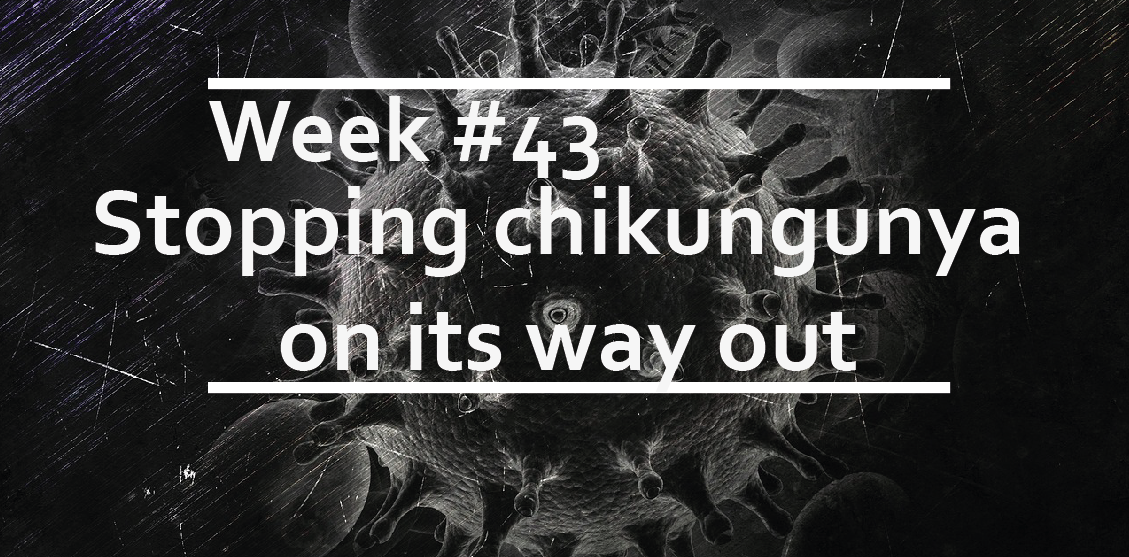Stopping chikungunya on its way out
When our bodies come under attack from a viral pathogen, a sophisticated antibody response activates to limit the spread of infection. As part of this response, antibodies are produced against multiple epitopes of the invading virus, returning fire on multiple fronts. This counterattack against the virus is centred on a subset of antibodies that can block virus infection, also known as neutralizing antibodies (NAbs). Typically, these NAbs work by stopping the virus from binding to the cell’s receptors, thereby blocking viral entry into the target cell.
However, some studies have reported how NAbs can also block viral infection in other ways. For example, by preventing some of the viral proteins from performing their necessary conformational changes, by forcing the viral particles to aggregate, or by disrupting viral assembly.
In a recent article, scientists at the Blood Systems Research Institute (San Francisco) and Stanford University identified a highly effective panel of NAbs against the chikungunya virus (CHIKV). The authors found that this blend of antibodies was so effective against CHIKV because it combined complementary anti-CHIKV actions. First, they inhibit viral cell entry. However, should CHIKV evade this defense, they could also inhibit viral release from infected cells, preventing further spread, and then activating an immune response to clear the infected cells.
In their recent work, Jin & Galaz-Montoya et al. have elucidated the mechanism by which these NAbs block the release of CHIKV from infected cells. Here’s what they have found.
The widespread presence of CHIKV
Chikungunya (CHIKV) is an alphavirus belonging to the Togaviridae family. Transmitted to humans by Aedes species mosquitoes, CHIKV causes severe fever and debilitating arthralgia that can last for months or years. Predominant in tropical and subtropical regions, in 2013 a CHIKV outbreak began in the US, and it has since spread throughout the western hemisphere, resulting in almost 2 million reported cases. Unfortunately, treatments are generally symptomatic, with no approved vaccine or antiviral treatment available.
How CHIKV attacks
The first step in CHIKV infection involves binding of the virus to the host cell receptors. Cell entry is then facilitated by the viral glycoproteins E1 and E2. The E2 envelope protein is a type I transmembrane glycoprotein responsible for cellular receptor binding. Based on the wide range of cell types that CHIKV infects (based on in vivo and in vitro data), the cellular receptor of CHIKV is likely to be ubiquitously expressed among species and cell types, and it acts mainly as an attachment factor that the virus uses to initiate cell contact. The E1 envelope glycoprotein contains a hydrophobic fusion loop that mediates low pH-triggered membrane fusion during virus infection. Eventually, the viral genome is released into the host cytoplasm, where replication of new viral particles can begin.
NAbs treatment of CHIKV-infected cells induce budding viral arrest
Using an in vitro approach, Jin & Galaz-Montoya et al. first describe how CHIKV infection progresses, comparing the contributions of Nabs and non- NAbs. U2OS cells were infected with CHIKV and at 3 h post-infection, when the virus had entered the cells and initiated viral genome replication, these cells were treated with either NAbs or with non-neutralizing antibodies (non-NAbs) against CHIKV.
Both of these antibody types, NAbs and non-NAbs, target the CHIKV E2 glycoprotein, thereby blocking receptor attachment. Using super-resolution microscopy, the authors found that the non-NAbs co-localized with viral structural proteins evenly over the plasma membrane of the infected cells, distributed at distinct and relatively sparse sites of active virus budding. In contrast, treatment with IM-CKV063 and C9 (two NAbs) induced large patches of intense fluorescence at the plasma membrane of the infected cells, suggesting a coalescence of glycoproteins during virus budding.
Using electron microscopy, the authors found that treatment with non-NAbs led to the release of virions from infected cells; whereas the presence of the two NAbs inhibited CHIKV release and induced the accumulation of nucleocapsid-like particles (NCLPs) in the cytosol, immediately under the plasma membrane. Also, the plasma membrane failed to curve-around and envelope these NCLPs, thereby preventing virus budding.
The mechanism
Normally, CHIKV assembles highly organized, spherical particles that bud from the plasma membrane: pre-assembled nucleo-capsids, which already have an icosahedral architecture, bind E2 at the plasma membrane to induce spike lattice formation and particle budding.
To understand how NAbs led to the arrest of the envelopment of NCLPs, the authors investigated the localization of those NAbs that had been administered to the infected cells. They found that the NAbs bind to and crosslink E2 glycoproteins at the surface of CHIKV-infected cells, disrupting their normal hexagonal ordered organization on the plasma membrane. This crosslinking induces the formation of large and dense patches of NAbs-glycoproteins complexes, which stops the virus-induced curving of the plasma membrane (required for enveloping the virus particles during virus release). This encloses the NCLPs within the cell, ultimately blocking CHIKV’s attempts to bud out of the cell and infect neighbouring cells.
Backup arrives!
Next, Jin & Galaz-Montoya et al. tested whether the presence of these large dense patches of NAbs-glycoprotein complexes on the surface of infected cells enables the binding of Fc receptors on the surface of immune effectors cells, thus leading to induction of the cell-mediated immune defense response. Indeed, while these NAbs crosslink glycoproteins to block virus budding, they can also engage Fc receptors on effector cells to induce a strong antibody-dependent cell-mediated cytotoxicity (ADCC) response, phagocytosis, and cytokine and chemokine release, promoting the cytotoxic lysis and clearance of CHIKV-infected cells. Such an all-round and effective plan of action! We could almost feel sorry for the virus.
Although further in vivo data is now needed, the findings of Jin & Galaz-Montoya et al. provide further evidence that NAbs can inhibit pathogens at multiple stages of their life cycle. Thus, we should be careful about focusing too heavily on the role of entry neutralization when investigating NAbs. As clever as viruses are, human biology has evolved a myriad of equally clever defense mechanisms, with surely much left to uncover.




